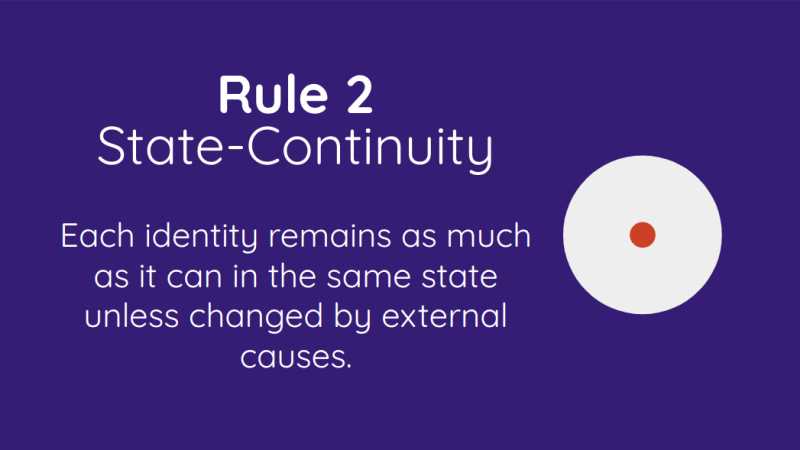Conservation of Momentum: The 4 Rules of True Motion
Table of Contents
Each of the 5 Layers implements a Conservation Law in order to maintain the balance in the universe.
The Conservation Law for the Spatial Layer is the Conservation of Momentum.
- This states that total momentum of a system remains constant when no external forces act on the system.
A body that ’tends’ towards some direction does not mean that there is a thought or desire inside the body that carries it there. Instead, it means that it is disposed to move there and that there is something preventing it.
Rene Descartes
The World, Chapter 13
The Law of Conservation of Momentum is implemented by the Rules of Motion.
Rule 1: No Void
No body moves into the place of another body unless at the same time that other body moves into the place of another body.

This is based on the maxim that there is no Void in Nature. This means that every space in existence, whether physical or metaphysics, is filled up.
- In the physical domain, it is filled with virtual particles such as virtual photons
This rule is the basis for:
- Virtual particles filling “empty” space
- Gravity pushing object down objects
According to Descartes, through an eternal revolution from rest to motion and motion to rest, the amount of motion in the universe was always the same. But there was no void.
No part of matter could be moved without thrusting some other out of its place. The matter which any body pushed before it, rolled immediately backwards, to supply the place of that matter which flowed in behind it.
This is similar to the swimming of a fish. The water, which it pushes before it, immediately rolls backwards, to supply the place of what flows in. It thus forms a vortex around the body of the fish. In the same way, the motion originally impressed by the Creator on matter produced in it an infinity of vortices, or circular streams.
Adam Smith
The History of Astronomy
Note
This is in Part 2, Proposition 7 of Spinoza’s Principles of Cartesian Philosophy, and inferred from Principia, Part 2, Article 33Rule 2: State Continuity
Each identity remains as much as it can always in the same state. It is never changed except by external causes.

This absorbs Newton’s First Law of Classical Mechanics while making it consistent with Quantum Mechanics.
This rule is the basis for:
- Photons going continuously forward
- Quantum superposition being predicatble by Cartesian Relativity
- Line spectra being emitted by electrons
Note
This is in Part 2, Article 37 of Descartes’ Principia Philosophia and Part 2, Proposition 14 of Spinoza’s Principles of Cartesian PhilosophyRule 3: Straight or Circular
Every moving identity moves in a straight line when alone, and in a curve or a circle when moving with others. When in a circle, it moves away from the center.

This is angular momentum and centrifugal force which is really straight-line motion confined.
This rule is the basis for:
- Gravity following the inverse square law
- Planetary orbits and galaxy rotation curves
Note
This is in Part 2, Article 39 of Descartes’ Principia Philosophia and Part 2, Propositions 15-17 of Spinoza’s Principles of Cartesian PhilosophyRule 4: Collisions
When a weaker identity hits a stronger, it will be deflected. When a stronger hits a weaker, it will transfer some of its force to the weaker.

Note
This is in Part 2, Article 40 of Descartes’ Principia Philosophia and Part 2, Proposition 20 of Spinoza’s Principles of Cartesian PhilosophyThis rule is the basis for:
- Nuclear fission and fusion
- Chemical reactions
Newton’s Laws Versus Descartes’ Rules
We compare the the principles of Newton and Descartes regarding motion:
| Newton | Descartes |
|---|---|
| Law 1: Inertia | Rule 2: State Continuity |
| Law 2: Force | Rule 1: No Void |
| Law 3: Action-Reaction | Rule 4: Collisions |
The main difference is that Descartes’ is based on quantum or aethereal movement, while Newton’s is based on material movement.
The problem with Newton’s system is that material principles cannot be extedned to aethereal phenomena, aethereal principles can be extended down to material phenomena.